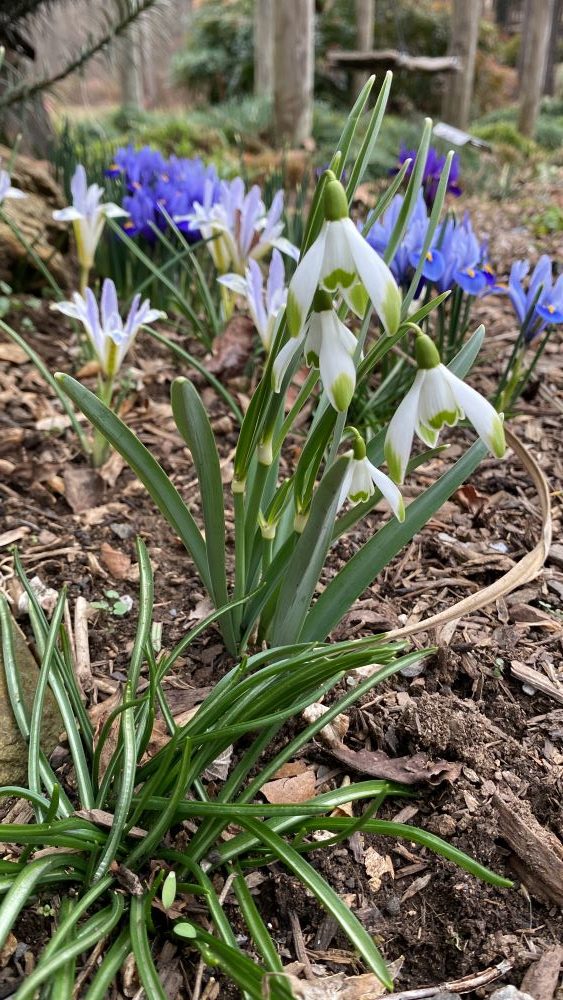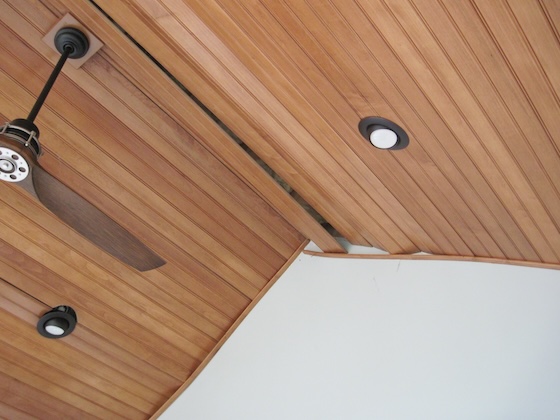

Few readers have an appetite for winter when spring is currently doing all the things that spring does in all of the ways spring does them. But for those who have already grown weary of scrolling 4.6 million posts on the #springgarden, I have a few thoughts about the #wintergarden, or at least the thoughts that occurred to me as I challenged myself to 85 days of documenting it on Instagram from January through March.

Next winter will come around faster than we expect, and choices we make (or don’t make) now during the planting season, have a huge effect on whether a four-season garden is in our future.
Or indeed, the products of a four-season garden.

It’s about patience
This is the first year that I felt there was some ‘body’ to my winter garden. It surprised me that all that planting and planning was beginning to coalesce into something that, viewed from a certain angle, at a certain time of day, with a reasonable amount of alcohol in one’s bloodstream, might be considered a winter garden. In six years.

Dusk does wonders but a light tidy would have been nice.
It’s about managing expectations
The winter garden builds upon itself the same way that the rest of our seasons do – it’s better and bigger with another go around the sun. But where we give our growing season gardens a huge amount of leeway to disappoint and frustrate us, we are less forgiving with our winter gardens.
Most likely due to the fact that we’re cold and irritated. And our winter garden doesn’t instantly look like Longwood…or Kew.

What? You don’t have a fully mature Libani cedar with accompanying yew hedge?

Or giant Christmas balls?

Or a birdhouse tree?
And it’s not as if books, magazines, or social media platforms are all clambering to show us a winter garden that is in its infancy to help us measure the quality and pace of our own garden-building. The minutiae of garden making is not a particularly inspirational process in the summer, much less the winter. We’re simply not going to find that kind of honesty.

Even the warmth of May isn’t making this process look better.

Five years later and structure in the kitchen garden makes all the difference – whether January, March (when photo taken) or May. Glad I took photos.
It’s about finding good information
Instead, most authors/influencers/publishers are desperately trying to tempt us into something we didn’t feel we needed to do with the finest examples of where we might end up if we tried. If you’re going to sell an editor on a story about the niche market of winter gardens, you’d better do it with gobsmacking images. There’s no click-bait in tiny shrubs peppering a grey wasteland, or a white, snowy one.

Hard to get excited…

Now that’s better – three years almost to the day, and not even tidied.
Yes there is merit in aspirational images. But as so much of a winter garden is about structure (even more so than a summer garden), so much of a winter garden is about time. And taking time is sooooo 20th century.
Faced with ideal vs. reality, it’s way too easy to feel discouraged. So we plant a few snowdrops and a bag of Tête-à-têtes near the front door, it looks scant and tundra-ish, and we give up.

This’ll sort it, surely?
It’s like showing someone Gisele Bundchen in Downward Dog to get them to start a yoga practice for increased flexibility and tone, when what they REALLY need to see is their yoga-loving next door neighbor looking better in a dress than she did last year.

Better curves than Giselle’s – but just as aspirational. (From Naomi Slade’s The Winter Garden)
The winter garden builds upon itself
Better to banish the little demon of self-doubt telling you ‘why bother,’ put Gisele the hell out of your head, and continue to add shrubs, bulbs, perennials and hardscaping this spring with an eye toward whatever your particular shade of winter brings.
In a few years you’ll have a moment down the line where you say, “Wait. I think I see it coming together.” Or at least, “I see where this is going now.” That was my moment this year, and it is incredibly motivating to continue the process.

Ten years ago the thought of where to start was overwhelming. In summer much less winter.
Pieces of a Whole, Not Single Elements Carrying The Show
It’s not just about the early Tête-à-têtes. It’s about many cultivars of early daffodils and cold hardy perennials supported by the February foliage and flowers of healthy hellebores – hellebores that had just finished decorating the January ankles of witchhazel, cornus, and maybe even some pedestrian box.

It’s not just about the snowdrops. It’s about the snowdrops peppering a bed of Iris reticulata, or adding an elegant touch to a brick wall or a well-placed group of stones. Or creating a river of gray green in a woodland with wide, strong foliage and promiscuous tendencies.

It’s not just about lollipop spruce and gumball box. It’s about broad leaf evergreens and variegated evergreens and weeping evergreens giving foil to a rich mix of stems, berries, seed heads, bark, and tawnied grasses.

It’s about lichens and mosses in a warm up, and ice sculptures on the coldest day of the year.

Sometimes it’s about cleaning up. Sometimes it’s about leaving the structure.

It’s about building a winter garden, not instantly having one. We just need to give our winter gardens a chance to grow. – MW
Why Should We Think About Our Winter Gardens Right Now? originally appeared on GardenRant on April 4, 2024.
The post Why Should We Think About Our Winter Gardens Right Now? appeared first on GardenRant.





More Stories
5 Reasons You Need Snow Removal Services
Green Industry Veteran Nick Jiannas Joins Kress Commercial
What To Include In Your Landscaping Plan